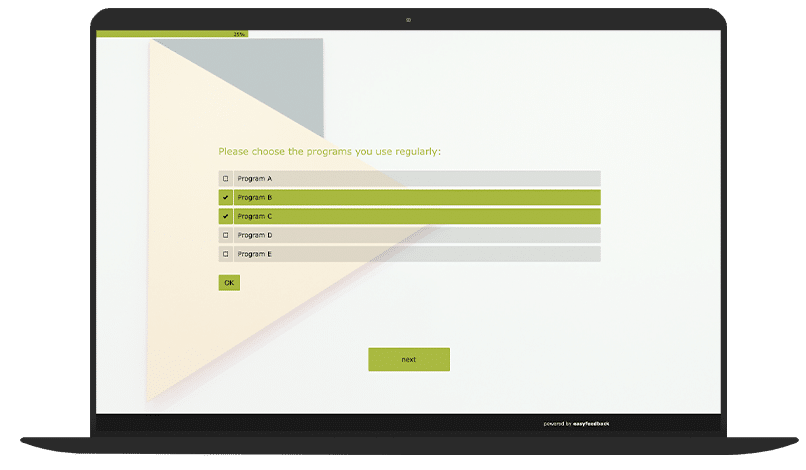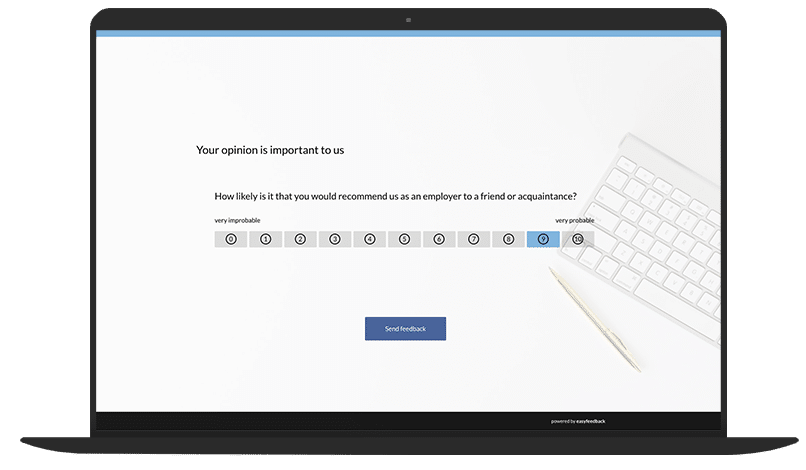What is the employee lifecycle?
The Employee Lifecycle describes the six phases an employee goes through during their engagement with a company.
It is usually presented in the form of a cycle and includes the phases:
- Attraction
- Recruitment
- Onboarding
- Development
- Retention
- and Separation.

What are the 6 phases of the employee lifecycle?
As I mentioned in the chapter before, an employee’s cycle consists of six phases that they experience with a company.
Knowing these is the be-all and end-all for a company.
Based on these phases, companies can use targeted employee lifecycle management to examine each of them and optimize them with purposeful measures so that (potential) employees have a positive experience along all phases.
What the phases are and what they mean for a company is explained below:
1. Attraction
In the first phase of the employee lifecycle, job seekers become aware of a potential new employer, for example, through a job advertisement, a recommendation from a friend or acquaintance, job fairs or other circumstances.
This is precisely where companies need to score points with an attractive and well-known employer brand.
Ways to do this include conducting PR and social media campaigns for employer branding or participating in recruiting events.
The goal is to convince these job seekers of a company’s employer brand and attract them in such a way that they move on to the next phase of the employee lifecycle.
2. Recruitment
After a job seeker has been convinced by the attractiveness and awareness of the company’s employer brand, the next step is for him or her to apply for a job that suits him or her.
This is where the job seeker comes into contact with the company’s application process.
The application process is a critical stage in the employee lifecycle, as the way applicants are treated during this process (even those who don’t get the job) will forever affect their perception towards the company.
Therefore, provide a positive experience even in the application or recruitment phase and try to avoid negative experiences on the part of the applicants.
With a few tricks, you can prevent the applicant from perceiving your company negatively.
This includes giving feedback on the status of the application, showing the best side of the company during an interview and, if an applicant is rejected, stating the reasons and thanking them for their interest.
3. Onboarding
An applicant has convinced the company and has now been hired for the open position. This marks the beginning of the third phase of the employee lifecycle.
The first few weeks of work are now about integrating the new colleague into the company and the workplace and helping them to settle in so that they feel comfortable with their new employer right from the start.
A poor or inconsistent onboarding process can leave employees feeling confused, disappointed or intimidated by their work environment.
On the other hand, when onboarding is done correctly, it creates a smooth transition for new employees who are easily assimilated into the company culture.
Tip:
By getting regular feedback from new employees, you can examine, tweak and get your company's onboarding process on the right track so that all new colleagues get off to a good start right out of the gate.

4. Development
Over time, the new colleague has settled in and now reaches the fourth phase of the employee lifecycle.
In the fourth phase, the employee should now continue to develop in his or her position and activity.
Further training and promotion of the employee are good starting points here to develop the employee professionally and increase his commitment to the company.
Tip: Here, too, you can use a survey from time to time to find out the employee's need for further training so that you can then plan the measures in a structured manner.

5. Retention
The goal of every manager and HR department is to retain employees over the long term in order to reduce costs for new hires and avoid disruption to processes.
Employee retention is thus the fifth stage of the employee lifecycle and should be a high priority for employers.
Regular feedback on employee satisfaction and the implementation of measures, contribute positively to the employee experience.
A positive employee experience, in turn, contributes to higher retention and a reduction in turnover.

6. Seperation/Exit
If an employee is terminated, resigns on their own or retires, the final phase of their employee cycle begins.
It does not matter for which of these aforementioned reasons a separation takes place, the offboarding of the employee should be carried out in a structured, appreciative manner and with a positive experience on the part of the departing employee.
Also keep in mind: a departing employee can also come back. They can also be an advocate for your company and recommend you positively as an employer.

Conclusion: The employee cycle – the be-all and end-all for the employee experience
HR departments are not only responsible for personnel management and personnel development.
They are also there to position the employer brand attractively on the labor market in the battle for the best talent and to retain existing employees in the long term through a positive employee experience.
In order for HR departments to be able to master this task, they must optimize the employee lifecycle step by step for each of the six phases described in this article.
By continuously analyzing along this employee lifecycle, they can find out what applicants and employees want in each phase, what they expect, and how satisfied they are with the experience in each phase.
Only then can they also successfully master the Employee Experience for the battle for talent and long-term employee retention.



